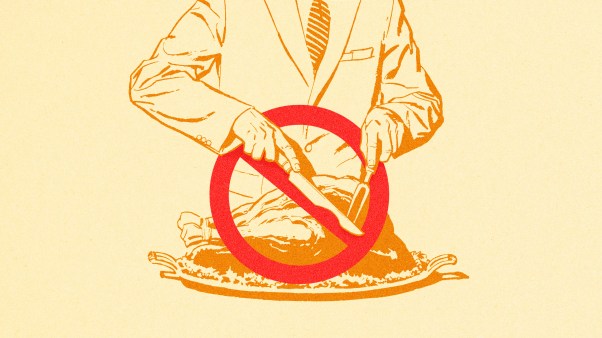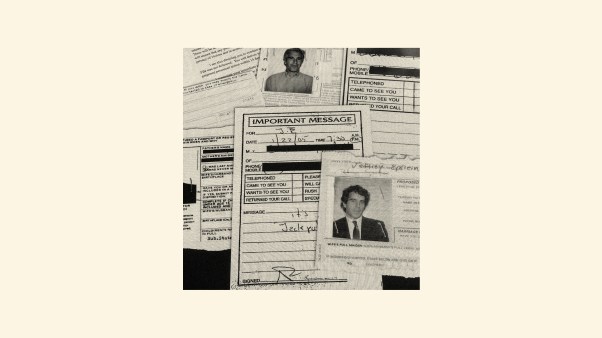The first description of the Promised Land given to Moses captures the essence of Palestine’s geography: “The land you are crossing the Jordan to take possession of is a land of mountains and valleys that drinks rain from heaven.” Palestine itself was only the size of modern New Jersey, but its dramatic changes in elevation were only one of the countless perils for travelers.
Nevertheless, travel was a major part of first-century Palestinian life, as the Gospels record: Mary left Nazareth to visit Elizabeth in the hills of Judea; foreign dignitaries came to pay homage to the new king of the Jews; Jesus attended the wedding feast at Cana and visited with Mary, Martha, and Lazarus in Bethany. In fact, the travel narratives form a large proportion of the Gospels.
Getting around
The least expensive mode of transportation was, of course, walking. Walking speed depended on the climate, season, and terrain, but one could generally walk about 20 miles in a day. Itineraries and travelogues of ancient Egyptians suggest that such a rate was typical for millennia. People walking the Persian Royal Road from Persepolis to Sardis (1,560 miles) averaged 18 miles a day, completing the entire journey in three months; government couriers changing horses at posting stations could cover the same distance in nine days. The Book of Acts recorded Peter walking 40 miles from Joppa to Caesarea in two days. Of course, Jews did not permit travel on the Sabbath, when walking was limited to 2,000 cubits (about three-fifths of a mile).
Jesus, like many of his contemporaries, crisscrossed the country numerous times. Assuming he went from Nazareth to Jerusalem annually for each of the three required annual feasts using the shortest route through Samaria, a distance of 75 miles each way, he would have walked a minimum of 13,500 miles before beginning his ministry. On at least one of his later pilgrimages, he went from Capernaum to Jerusalem by way of Jericho, 106 miles each way. Estimating conservatively, Jesus probably walked at least 15,000 miles in his lifetime.
Donkeys were frequently used to transport goods. They are fairly strong for their size, sure-footed, and even-tempered, especially when compared with camels. As early as 3000 B.C., caravans ranging from 100 to 3,000 donkeys brought goods from Asia Minor to Mesopotamia. The animals were not used for riding except by women, children, or those too weak or old to walk. The fictional Good Samaritan, for example, put the injured man on a donkey to transport him to the inn. When Jesus entered Jerusalem on a donkey, it was an act of great humility.
Horses were faster and more prestigious than donkeys but also more expensive. A horse can travel 25 to 30 miles per day; changing horses throughout the day can yield extra miles. Roman couriers averaged 50 miles but could ride up to 200 miles a day if required. Emperor Tiberias, for example, rode 500 miles in three days to see his dying brother Drusus.
Chariots, from Egypt, were typically used only by the very wealthy or powerful, and the only mention of such transportation in the New Testament is the story of an Ethiopian eunuch riding on the long road from Jerusalem to Gaza.
Dangers, toils, and snares
Along their way, travelers risked dangers and hardships.
Attacks by wild beasts remained a threat until the end of the nineteenth century, particularly along the Jordan Valley. Worse than the lions, which were eradicated from Palestine during the 1800s, were the unpredictable Syrian bears in the hills.
Far more likely were attacks by bandits along lonely stretches, as described in the parable of the Good Samaritan. These attacks were often politically motivated, and the Roman penalty for such acts was crucifixion (Barabbas was likely such a bandit). More than a millennium earlier, an Egyptian official described similar dangers:
“Behold, the ambuscade is in a ravine 2,000 cubits deep, filled with boulders and pebbles. … The narrow valley is dangerous with Bedouins, hidden under the bushes.
“Their hearts are not mild, and they do not listen to wheedling. You are alone; there is no messenger with you, no army host behind you. You find no scout, that he might make you a way of crossing.
“You come to a decision to go forward, although you do not know the road. Shuddering seizes you, [the hair of] your head stands up, and your soul lies in your hand. Your path is filled with boulders and pebbles, without a toe hold for passing by, overgrown with reeds, thorns, brambles and ‘wolf’s-paw.’ The ravine is on one side of you, and the mountain rises on the other. You go on jolting, with your chariot on its side, afraid to press your horse [too] hard.”
Where to stay
For Jews hospitality to travelers was a necessity. Not only did the land and climate make necessary the giving of water, food and protection, but God commanded it. Jews described Abraham as the model host and considered him the founder of inns for travelers. In one story, God himself dropped in on Abraham just after the three heavenly visitors had arrived; God was told to wait while Abraham attended to the guests who had arrived first.
Even when Jerusalem was flooded with pilgrims during the feasts, Jews were expected to take in as many guests as possible. Rabbi Nathan described Jerusalem as a city where “No man ever said to his fellow, ‘I haven’t found a bed to sleep on in Jerusalem . …’ No payment for a bed is accepted there—Rabbi Judah says, ‘Not even payment for beds and coverings.'”
So at Passover, Jesus and his disciples used a furnished upper room for the meal (for which no payment was mentioned as part of the arrangement). There were also hostels next to synagogues where travelers could spend the night. Those who came to Jerusalem after the rooms were full would spend their nights in tent camps located on the Mount of Olives.
The expected generosity of a host must have been a virtue not without problems. For centuries rabbis hammered out the details of hospitality: setting priorities for receipt of such charity, limits of responsibility, and duties of the host and guest. The details included practical suggestions for handling a burdensome guest not anxious to leave. Such hospitality, however, was not ordinarily extended to non-Jews, who used instead commercial inns.
AAA Guide to Palestine
Travelers could purchase travel guides and maps. Publishers flourished in Rome, such as Dorus or the Sosii brothers, whose shop was located at the exit of the Forum behind the Temple of Castor. They produced itineraries including lists of inns, way stations, and taverns along various routes, including the distances between them. They indicated natural obstacles, such as rivers (with bridges marked) and mountains with their passes indicated.
Other maps indicated stopping places as well as their amenities. Sometimes commenting on the quality of food and accommodations, the handbooks provided an early rating system for hotels and restaurants.
The Tabula Peutingeriana, an eleventh-century copy of a third-century Roman map, shows all the military roads from Britain to the Euphrates drawn in six colors and includes symbols that indicate supply depots, taverns, cisterns, barracks, and temples.
Where to go
Jesus’ journeys between Galilee and Jerusalem have been the most misunderstood travel accounts in the Bible. Josephus’s reference to a Samaritan attack on a group of Galilean pilgrims going to Jerusalem has often been taken to explain that Jesus’ route through Samaria was unusual and risky. Many have asserted that Jews refused to travel through Samaria at all, crossing the Jordan to the east in order to avoid the area they regarded as “unclean.”
This notion is a myth. The Samaritan attack Josephus referred to happened in A.D. 52, and no such attack had occurred before or during Jesus’ lifetime. Even Josephus says, “It was the custom of the Galileans, when they came to the Holy City at the festivals, to take their journeys through the country of the Samaritans.” The route from Galilee to Jerusalem via Samaria remained the shortest and easiest route, a journey that took only three days.
Pilgrims from Galilee passed through the Herodian royal estates in the Jezreel Valley to Ginae, spending the night in the last city in Jewish territory. The next day they walked across the rolling hills and valleys of Samaria to Anuathu Borcaeus, the first Jewish city of Judea, or further if daylight and weather permitted. The third day was spent walking along the ridge route of the mountains of Judea up to Jerusalem.
The direct route through Samaria was not, however, the only way from Galilee to Jerusalem. It was also possible to follow the Jordan River to Jericho, then ascend the Jericho road to Jerusalem. This route was not only 23 miles longer, but also considerably hotter, with a steeper ascent to Jersualem. The bulk of the 3,400-foot change in elevation—Jericho lies 812 feet below sea level and Jerusalem towers 2,600 feet above sea level—occurs within a distance of 15 miles. The steep road winds through a desolate wasteland of barren rock with twisted canyons and cliffs.
Pilgrims went up to Jerusalem for the three required feasts: Unleavened Bread, Weeks (Pentecost), and Tabernacles. Jesus also went to Jerusalem during Hanukkah (the Feast of Dedication), even though there was no commandment to go to Jerusalem for the celebration.
Pilgrims from the entire civilized world—from Rome to Mesopotamia, from Pontus to Arabia—came to celebrate Pentecost in Jerusalem. Josephus records 256,000 sacrificial lambs offered at Passover in A.D. 66, a figure implying over 2 million participants, an enormous even if somewhat exaggerated number. Joseph, Mary, and Jesus made their pilgrimage from Nazareth to Jerusalem at Passover with a company of relatives and acquaintances large enough for Jesus’ absence not to be noticed for a full day’s journey.
By the time Paul began preaching, Roman roads extended into Palestine, and established routes were constantly improving. In A.D. 56, Nero began placing milestones in Palestine at every Roman mile (4,862 feet), and indicating the distance to the next town.
Given the demands of travel in those days, the Jesus portrayed in many paintings—a fair-skinned, scrawny wimp—may be quite inconsistent with a man who traversed such demanding, dangerous paths so frequently.
Merilyn Hargis is an archaeologist and director of the Excel Degree Completion Program at San Jose Christian College, San Jose, California.
Approximate Distances on Roads Used in the First Century | |
| • Jericho to Bethany | 14 miles |
| • Bethlehem to Jerusalem | 5.5 miles |
| • Nazareth to | |
| Jerusalem via Jericho | 97 miles |
| Jerusalem via Samaria | 75 miles |
| Capernaum | 20 miles |
| Cana | 9.5 miles |
| Nain | 8 miles |
| • Capernaum to | |
| Jerusalem | 106 miles |
| Caesarea Philippi | 34 miles |
| Magdala | 7 miles by land, 3 by boat |
| Gergesa almost | 6 miles by boat |
| Bethsaida | 4 miles |
| Chorazin almost | 2 miles |
| • Jacob’s Well (Shechem) to Jerusalem | 39 miles |
Copyright © 1998 by the author or Christianity Today/Christian History magazine. Click here for reprint information on Christian History.









